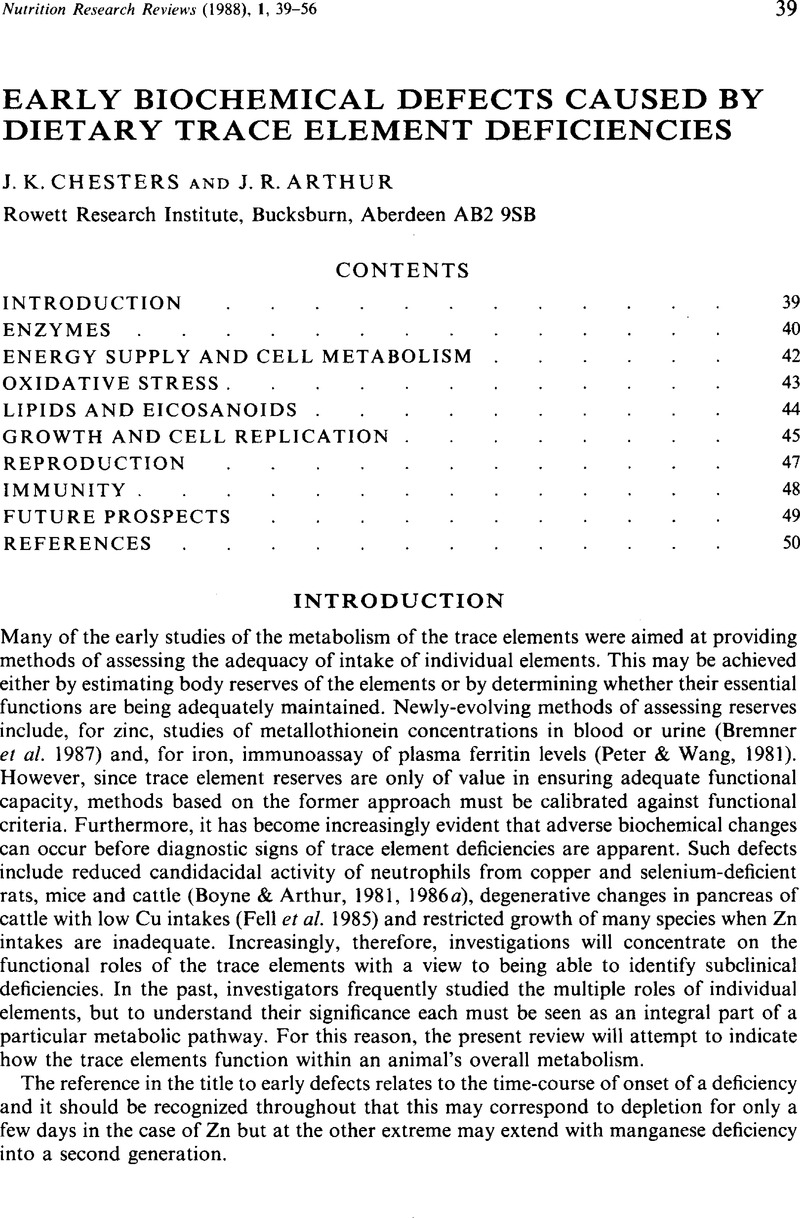Crossref Citations
This article has been cited by the following publications. This list is generated based on data provided by Crossref.
Chesters, John K.
Boyne, Ronald
and
Petrie, Linda
1990.
Effects of growth, food intake, and dietary zinc on diadenosine tetraphosphate concentrations in rats.
The Journal of Nutritional Biochemistry,
Vol. 1,
Issue. 2,
p.
107.
Walker, Ann F.
1990.
The Contribution of Weaning Foods to Protein–Energy Malnutrition.
Nutrition Research Reviews,
Vol. 3,
Issue. 1,
p.
25.
Aggett, Peter J.
and
Barclay, Susan M.
1991.
Principles of Perinatal-Neonatal Metabolism.
p.
500.
Arthur, John
and
Duthie, Garry
1994.
Trace Elements and Free Radicals in Oxidative Diseases.
p.
241.
Singla, P. N.
Chand, Prakash
Kumar, Ashok
and
Kachhawaha, J. S.
1996.
Serum, zinc and copper levels in children with protein energy malnutrition.
The Indian Journal of Pediatrics,
Vol. 63,
Issue. 2,
p.
199.
Aggett, Peter J.
1998.
Principles of Perinatal—Neonatal Metabolism.
p.
909.
Belkameh, Mohammad Mahdi
Sedghi, Mohammad
and
Azarfar, Arash
2021.
The Effect of Different Levels of Dietary Magnesium on Eggshell Quality and Laying Hen’s Performance.
Biological Trace Element Research,
Vol. 199,
Issue. 4,
p.
1566.
2022.
Mineral Nutrition of Livestock.
p.
38.
2022.
Mineral Nutrition of Livestock.
p.
372.





